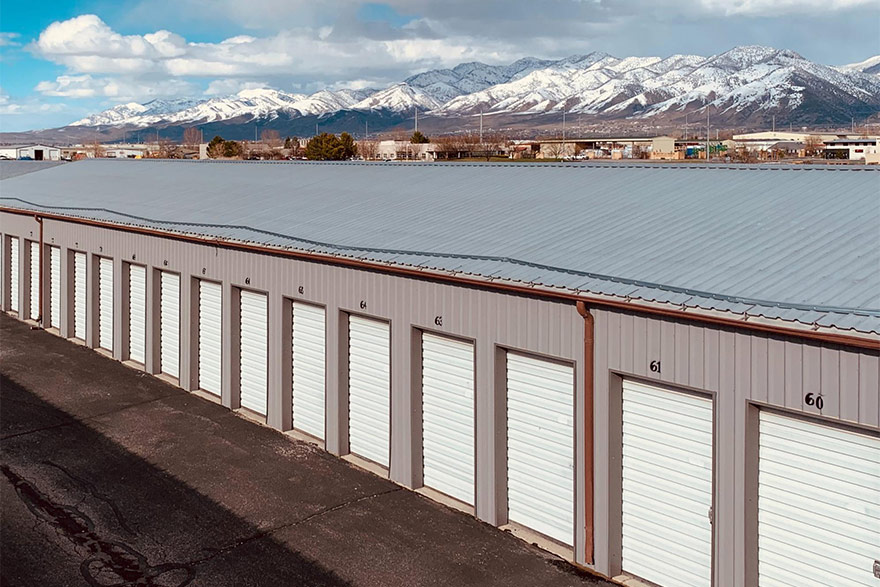While multifamily apartments are what typically comes to mind for investors in commercial real estate, other asset classes such as self-storage have also proven to be recession-resilient. This is why we invest in self-storage and will continue to do so as a means to diversifying our real estate portfolio.
Background
Self-storage is a unique asset class that has been around since the 1960s. In its early years, the industry was largely dominated by mom-and-pop operators and, even today, is still highly fragmented. Since then, this asset class has become more mainstream as REITs and private real estate companies have entered the market. It’s no secret why these institutions have entered this space as population growth and U.S. consumerism continue to drive demand for this asset class.
Here are some statistics on the scale of the self-storage industry in the U.S.
● According to IBIS world, annual self-storage revenue rose to $39.5 billion in 2019
● Number of self-storage facilities in the U.S: 44,061
● Amount of self-storage space per capita in the U.S.: 5.4 square feet per capita
● Percentage of U.S. households that rent a self-storage unit: 9% (About 1 in 11 Americans)
Top 5 reasons you should consider self-storage in your portfolio
1) Increased demand
As mentioned above, population growth and U.S. consumerism have driven demand for self-storage. The business concept is fairly straightforward and simple to understand – people need a place to store their stuff, either permanently or temporarily.
The demand is met largely by residential tenants (~70%), whether it be baby boomers downsizing or millennials seeking storage as they are delaying home ownership and renting longer. Other groups include commercial/small businesses, students, or military.
2) Low turnover
Contrary to what one may think, self-storage lease terms have an average range of 12-25 months, providing stable returns to investors. Estimates are that one-third of users have stored their stuff in one of these units for over 3 years.
Self-storage leases are often month-to-month as opposed to a year (in apartments), so there is potential for higher turnover as well. However, this can actually be to the investors’ advantage as most tenants would not choose to go through the hassle and inconvenience of moving to another facility if the rent increased from $50 to $60 per month (increasing income by 20%!)
3) Low overhead expenses and breakeven occupancy
Self storage facilities are much less expensive to build, manage, and operate when compared to other commercial assets like multifamily, retail, and office buildings. That is because there are no tenants living there, no amenities to maintain or clean, and fewer personnel required for staffing.
Lower expenses and overhead mean that the asset can break even with lower occupancy (decreasing risk to investors). On average, the breakeven occupancy for self-storage facilities is around 40 to 45 percent.
4) Asset class returns
According to the National Association of REIT, the self-storage sector produced an average annual return of 16.73% from 1994 to 2019. For comparison here are the returns from some other REIT sectors during that same time:
Office: 12.89%
Retail: 11.99%
Industrial 14.11%
Residential: 13.69%
Apartments: 13.45%
Manufactured Homes: 14.58%
Healthcare: 13.43%
Mortgage: 11.05%
S&P 500: 9.80%
(https://www.reit.com/data-research/reit-indexes/annual-index-values-returns)
5) Recession resistant
According to the NAREIT, the self-storage asset class also outperformed other sectors in the most recent recession. From 2007-2009 the self-storage sector produced an average of -3.80%. For comparison here are the returns from some other REIT sectors over that same time:
Office: -8.16%
Retail: -12.32%
Industrial: -18.31%
Residential: -6.43%
Apartments: -6.72%
Manufactured Homes: 0.47%
Healthcare: 4.92%
Mortgage: -16.34%
S&P 500: -22.03%
Why was self-storage able to outperform almost every REIT sector during the most recent recession? When the economy is bad, then, unfortunately, people may need to downsize their dwellings and, therefore, need to rent a self-storage unit to store their extra “stuff”.
Diversify your portfolio with self-storage syndication investments
As I mentioned above, the majority of self-storage facilities today are still run by “mom and pop” owners or private regional operators. As investors, you can take advantage of the recession-resilient nature of this asset class by participating in private syndications when sponsors identify value-add opportunities through management inefficiencies. You will be able to earn passive, predictable cash flow and enjoy the tax advantages that real estate offers. Invest with experienced and trusted sponsors in this asset class who have proven track records of success.
Cherry Chen is an internal medicine physician and founder of The Real Estate Physician, a resource focused on empowering busy professionals who are interested in investing for passive income through commercial real estate syndications. Cherry is the author of “The Physician’s Definitive Guide to Real Estate Syndications” and has been interviewed on multiple podcasts. She is an experienced passive real estate investor who vets sponsors and their deals and hopes she can bring value to fellow investors through the resources on her website.
Nothing on this website should be considered financial advice. Investing involves risks which you assume. It is your duty to do your own due diligence. Read all documents and agreements before signing or investing in anything. It is your duty to consult with your own legal, financial and tax advisors regarding any investment.








